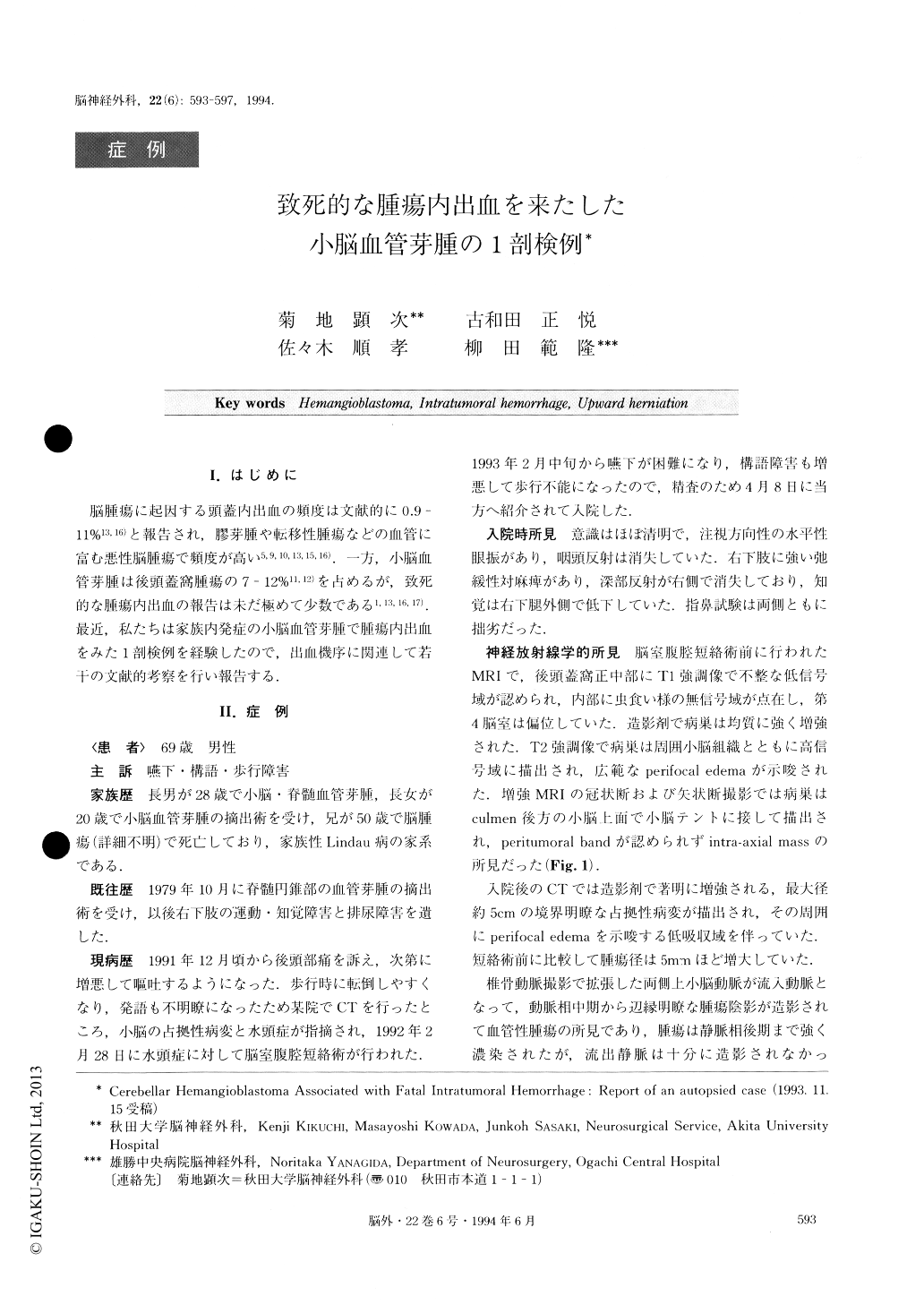Japanese
English
- 有料閲覧
- Abstract 文献概要
- 1ページ目 Look Inside
I.はじめに
脳腫瘍に起因する頭蓋内出血の頻度は文献的に0.9—11%13,16)と報告され,膠芽腫や転移性腫瘍などの血管に富む悪性脳腫瘍で頻度が高い5,9,10,13,15,16).一方,小脳血管芽腫は後頭蓋窩腫瘍の7-12%11,12)を占めるが,致死的な腫瘍内出血の報告は未だ極めて少数である1,13,16,17).最近,私たちは家族内発症の小脳血管芽腫で腫瘍内出血をみた1剖検例を経験したので,出血機序に関連して若干の文献的考察を行い報告する.
Intracranial hemorrhage associated with brain tumors is rate, but when present, it is often seen in malignant tumors such as glioblastoma and metastasis, and in meningiomas. Hemangioblastomas, benign vascular tumors, rarely develop fatal intracerebral hemorrhage. We thus documented an uncommon case of cerebellar hemangioblastoma associated with massive hemor-rhage, the cause of which was thoroughly examined during autopsy.
A 69-year-old man was transferred to our Service be-cause of swallowing disturbance and dysarthria. The patient was known to have a cerebellar hemangioblas-toma and hydrocephalus, for which VP shunt had been placed. Two weeks after admission he suddenly became comatose and eventually died of progressive herniation. At autopsy it was shown that the brain was edematous and covered with subarachnoid blood clots. The tumor was found involving the cerebellar vermis and the right hemisphere, protruding upward from the superior sur-face of the cerebellum. Horizontal sections through the cerebellum disclosed a well circumscribed tumor with adjacent hematomas involving the vermis and brain stem. The pathological diagnosis was hemangioblasto-ma and varix-like abnormal vessels were observed within the tumor. The sites of hematoma and tumor adjacent to the tentorial incisura and the history of VP shunting may suggest that upward herniation played a significant role in rupture of the abnormal vessels, which then led to the devastating hemorrhage in this particular case.

Copyright © 1994, Igaku-Shoin Ltd. All rights reserved.


